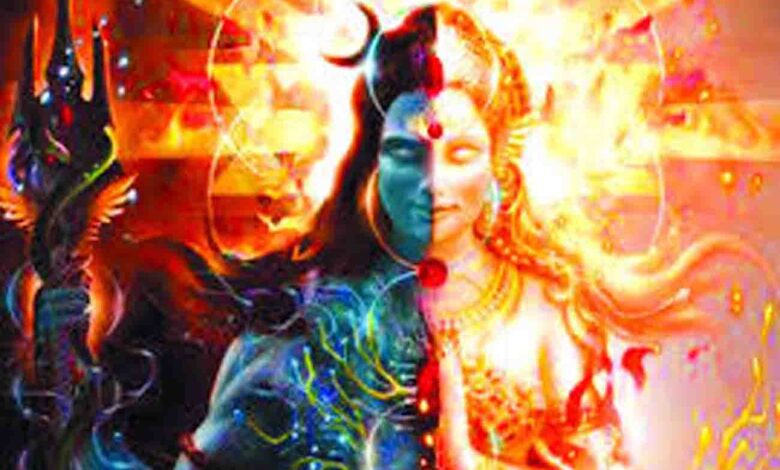Not opposites but complements – The dance of masculine and feminine energies

GUEST COLUMN
 Manisha Dhami
Manisha Dhami
You are not a drop in the ocean. You are the entire ocean in a drop, said Rumi. Within each of us exists a cosmos of dualities, a dynamic interplay of energies that, when harmonised, leads to a profound sense of wholeness. The relationship between masculine and feminine energies is a timeless archetype, shaping not only our identities but also our interactions with the world. These energies transcend gender; they are universal forces residing within every individual. The masculine, associated with strength, logic, and structure, finds its counterpart in the feminine, which embodies intuition, creativity, and fluidity. To embrace both is not to favour one over the other but to recognize their interdependence—a journey toward integration and balance.
Like the sun and the moon, or the inhale and exhale of breath, these energies are not adversaries but collaborators. Ancient traditions have long revered this duality. In Hinduism, the divine union of Shiva and Shakti symbolizes the synthesis of stillness and movement, power and creativity. Without Shiva, Shakti lacks form; without Shakti, Shiva remains dormant. Similarly, in Taoism, Yin and Yang are seen as complementary forces, in perpetual motion, creating harmony through their dance. Yet, in the modern world, this equilibrium is often disrupted. Logic, productivity, and achievement—qualities of the masculine—are frequently elevated, while intuition, connection, and presence—qualities of the feminine—are undervalued. This imbalance leaves us fragmented, as though living only half of our potential. The masculine empowers us to act and build, while the feminine teaches us to feel and create. Together, they form the essence of a fully realized human experience.
The journey toward balance begins with introspection. It invites us to ask: Where am I out of alignment? Do I over-rely on logic, dismissing the whispers of intuition? Or do I hesitate to take action, lingering in the realm of emotion? The goal is not perfection but integration. For those who resonate more with the masculine, this may mean cultivating stillness, embracing emotional depth, and exploring creativity. For those who identify more with the feminine, it may mean stepping into authority, taking decisive action, and setting clear boundaries. It is about embodying both the courage to lead and the grace to nurture, the ability to speak and the humility to listen.
This integration extends beyond the individual; it is a collective endeavor. Imagine a world where leaders are both resolute and compassionate, where parents guide with both firmness and warmth, and where relationships thrive on both strength and sensitivity. A world that values both progress and connection, reason and imagination, action and contemplation. This is the world we can co-create when we honor the interplay of energies within ourselves and in society. The beauty of this interplay lies in its fluidity. There are moments when the masculine energy takes precedence—when we must be decisive, focused, and driven. And there are moments when the feminine guides us—when we must be open, intuitive and empathetic. The key is to discern which energy is needed in each moment and to allow them to flow together in seamless harmony. This is not a fixed state but a dynamic process, a continuous exchange that keeps us grounded yet expansive, strong yet tender, rooted yet free.
Philosophically, the union of masculine and feminine energies challenges rigid binaries, reminding us that existence is not about opposition but complementarity. Rather than dismantling traditional roles entirely, this perspective encourages a fluid understanding of identity, where individuals can embody a spectrum of qualities without constraint. The synthesis of these energies is a form of alchemy—a transformation from fragmentation to unity, from duality to wholeness.
In a world often dominated by patriarchal structures, the feminine carries a revolutionary potential. It challenges the overemphasis on competition and individualism, offering instead a vision of interconnectedness and care. This aligns with ecofeminism, which sees the exploitation of nature and the marginalization of the feminine as interconnected issues. On the other hand, the masculine provides the necessary grounding for creativity and intuition to manifest—it is the structure that allows the flow, the discipline that nurtures inspiration into creation.
Hindu philosophy speaks of Lila—the divine play of the cosmos—a reminder that this dance of energies is not just human but cosmic. Yet, both energies have their shadow sides: unchecked masculinity can lead to rigidity and control, while unchecked femininity can result in passivity and emotional overwhelm. Recognizing and integrating these shadow aspects is crucial for achieving true balance. Cultural narratives shape how we perceive these energies. Many indigenous traditions revere the feminine as the source of life and wisdom, while modern societies have often diminished its value. Reclaiming these energies allows us to step into our full power, honoring both the wisdom of the past and the potential of the future.
As we navigate the complexities of modern life, let us remember: we are not meant to choose between strength and gentleness, action and reflection, or logic and intuition. We are meant to embrace them all. This is an invitation to explore the energies within, honor their interplay, and step into the fullness of who we are. For in this synthesis, we find not just harmony but wholeness—not just existence but aliveness.
(The author is an assistant professor, department of human development and family studies in MS University of Baroda. Views expressed are personal)






